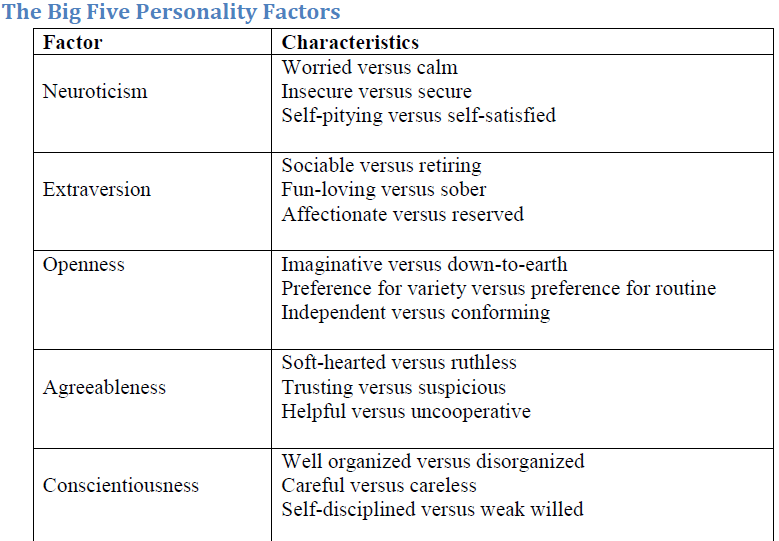Raymond Cattell’s work concerns identifying the basic structure of personality. He used a statistical procedure called factor analysis to determine how many basic traits make up the human personality. More recent research provides fairly consistent evidence that human personality is structured along five basic dimensions as shown below:

The Neuroticism dimension places people along a continuum to their emotional stability and personal adjustment. People who frequently experience emotional distress and wide swings in emotions will score high on measures of Neuroticism
The second personality dimension is identified as Extraversion, with extreme extraverts at one end and introverts on the other. Extraverts are very sociable people who also tend to be energetic, optimistic, friendly, and assertive. Introverts do not typically express characteristics, but it would be incorrect to say that they are asocial and without energy
The Openness dimension refers to openness to experience, rather than openness in interpersonal sense.
The characteristics that make up this dimension include an active imagination, a willingness to consider new ideas, divergent thinking, and intellectual curiosity. People high in openness are unconventional and independent thinkers.
People who are high on Agreeableness dimension are helpful, trusting and sympathetic. Those on the other end tend to be antagonistic and skeptical. Agreeable people prefer cooperation over competition. Those low in agreeableness like to fight for their interests and beliefs
Conscientiousness refers to how controlled and self-disciplined we are. People on high end of this dimension are organized, planful, and determined. Those on the lower end are apt to be careless, easily distracted from tasks, and undependable
Kavungya answered the question on
May 8, 2019 at 11:18